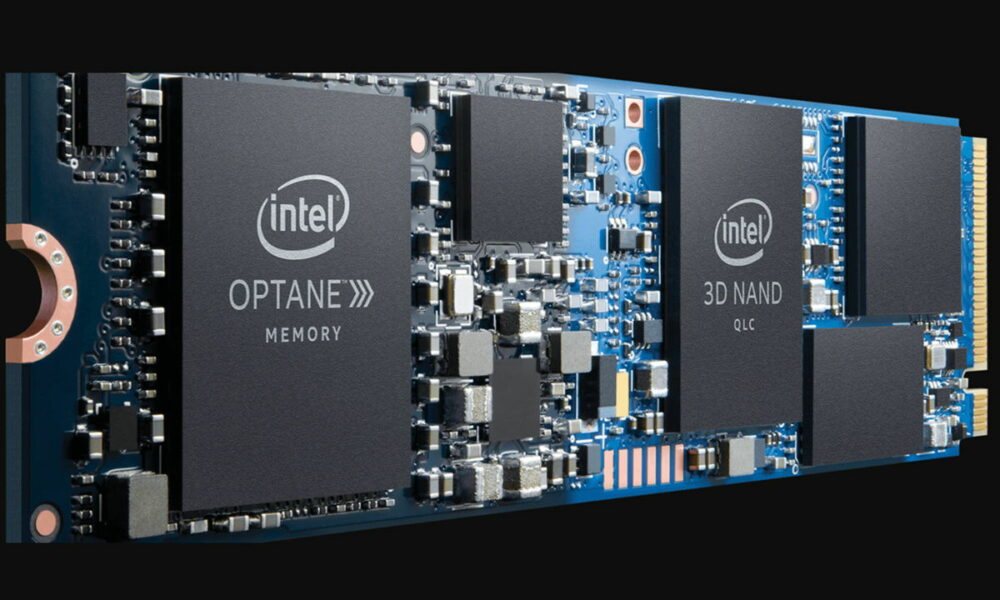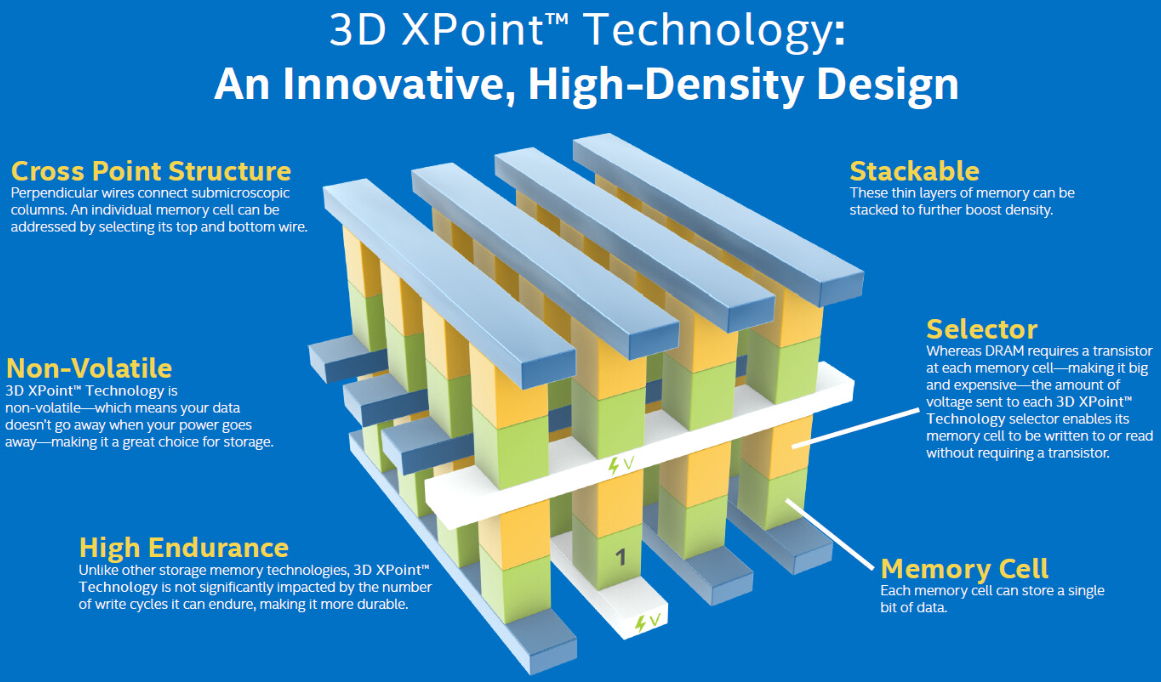
Intel is liquidating its business around Optane memory and the development of the associated 3D XPoint technology, according to a note issued in the financial results of the last quarter and a subsequent clarification published by Anandtech.
Intel announced its Optane memory and 3D XPoint technology in 2015 as the first category of non-volatile memory created since the launch of NAND flash in 1989. This technology, created from the ground up by Intel and Micron, combined the performance, density, power, non-volatility, and cost advantages of all memory technologies available on the market at the time.
Intel claimed that 3D XPoint was “up to 1,000 times faster, had up to 1,000 times higher resistance than NAND and was 10 times denser than conventional memory”. and as a result it promised to revolutionize the use of any device, application or service that would benefit from rapid access to large data sets.
If you get lost among so many technical and marketing data, we remind you that in essence the Optane memory was a small module that acted as a fast cache unit between the storage unit and the RAM memory. We had a chance to review some of these solutions like the Intel Optane Memory H10 and, well, it only improved performance under heavy workloads and not to the degree promised.
Taking into account that SSDs have a small additional memory that acts as a cache, in the product analysis we asked ourselves if This type of technology was necessary. against the latest generation NVMe SSDs and we believe that even Intel itself knew the answer: No.
Goodbye to Intel Optane memory
The reception of this technology by the industry and consumers was very lukewarm from the beginning and the situation has worsened with the passage of time and the massive implementation of SSDs. If Optane memory would have been marketed five years earlierwhen hard drives were the bottleneck of computer equipment, it would have been a real revolution.
When Optane memory hit the market, the industry was already churning out SATA SSDs, and PCIe was on the horizon. Today, once SSDs have done away with hard drives, this type of technology is simply unnecessary, does not improve performance, and is an additional cost that the industry does not support. Intel is aware and hence the shelving of this line of business:
“We continue to streamline our portfolio in support of our IDM 2.0 strategy. This includes evaluating the divestment of businesses that are not profitable enough or are not critical to our strategic objectives. After careful consideration, Intel plans to stop future product development within its Optane business. We are committed to supporting Optane customers through the transition.”
The reality is that Intel has been losing money betting on this technology for most (if not all) of its lifespan. There is no breakdown of results, but external media say that Intel has a large oversupply of 3D XPoint chips, at least two years of inventory that it has not been able to sell and in the income statement it has had to introduce a charge of 559 million dollars to the cancellation of the line.
Summary: Death Foretold. Optane memory would have been a revolution if it had arrived a few years earlier to improve the performance of hard drives. Today, with the very fast PCIe SSDs becoming cheaper in cost per GB and with the new PCIe 5.0 on the exit ramp, Intel’s technological proposal, while promising at the time, does not make any sense today.




